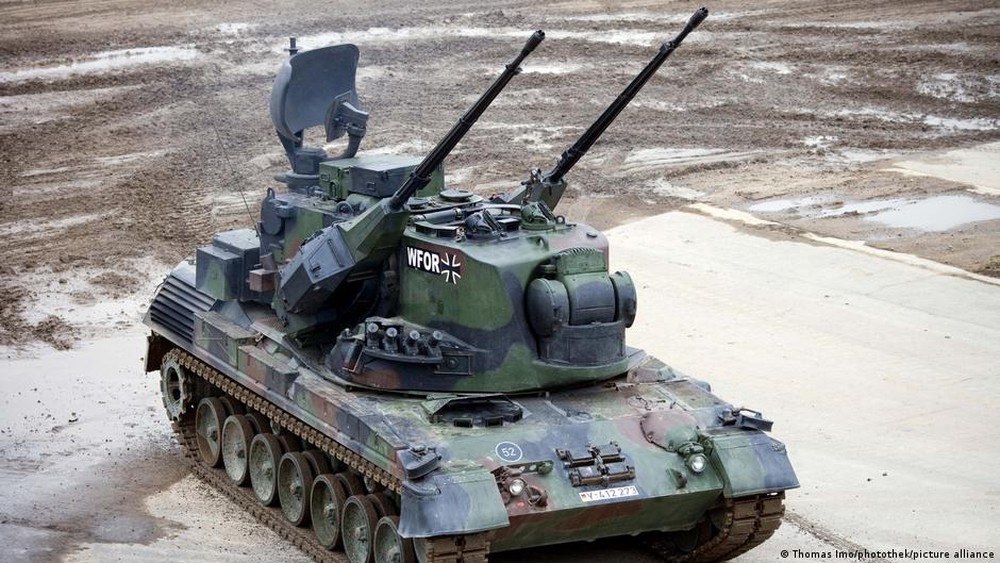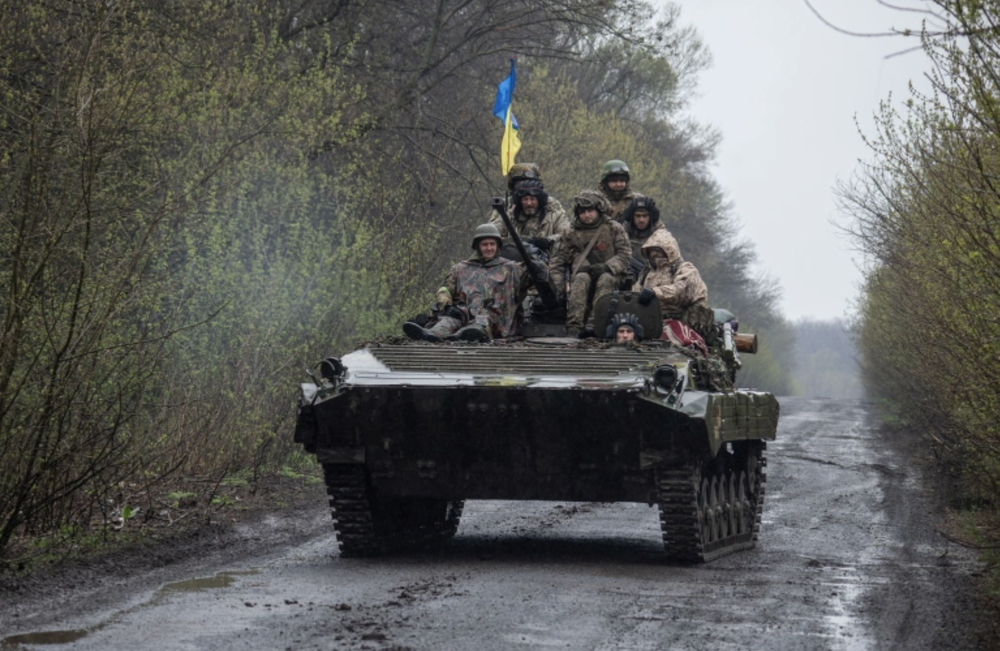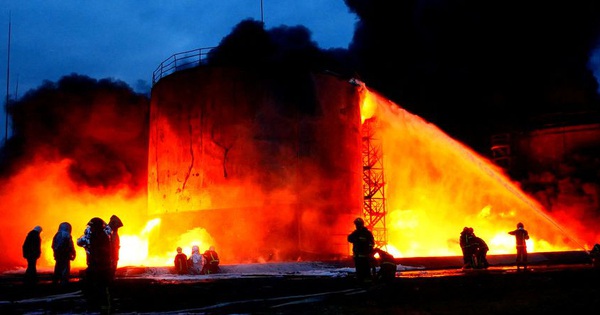Four weeks ago, Germany agreed to send dozens of self-propelled anti-aircraft guns to support Ukraine confront Russia in what it calls a turning point after decades of military restraint. Berlin says it could deliver the first Gepard self-propelled howitzers in July.
It is too slow a schedule, a Ukrainian lawmaker complained on May 24, as Russian forces rampaged through eastern and southern Ukraine.
MP Anastasia Radina told Reuters at the World Economic Forum (DAVOS) 2022: “Let me give you an example: Ask a mother who is forced to sit in the basement with her newborn baby without formula. How long is July with her?”
Kiev is increasingly pressing for help with heavy weapons after Moscow redirected its firepower to eastern and southern Ukraine. But one of the reasons for Germany’s delay was a lack of ammunition, according to industry sources and the Ukrainian ambassador. This fact was evident to Berlin when it first made the pledge.
According to government data, Germany is ill-equipped for military operations, despite having one of the largest defense industries in the world, with arms exports worth €9.35 billion in 2015. 2021.
Supplying weapons to Ukraine “makes sense only when there’s ammunition to go with it – that was obvious to everyone from the start,” an unnamed industry source told Reuters.
Asked to comment on the lack of ammunition, a spokesman for the German Defense Ministry said the government would assist where possible. On May 20, Berlin said it had found an ammunition depot and would send anti-aircraft artillery to Ukraine. But when asked how it found enough ammunition, the ministry did not respond.
Hours after Moscow launched a “special military operation” on February 24, the German military commander-in-chief said on LinkedIn that he was “fed up” with Germany’s neglect of the military, and that the German army are like “empty hands”.
To remedy that, on February 27, Prime Minister Olaf Scholz took a turn, pledging a special fund worth 100 billion euros ($107 billion) for defense.
But it was not a spontaneous response to the Ukraine conflict, defense sources told Reuters the plan was actually based on a Defense Department proposal made months earlier, in negotiations to form a governing coalition.
According to Reuters, the document said the German military (Bundeswehr) would need about 102 billion euros to secure funding for major defense projects up to 2030, and proposed a special fund in addition to the normal budget.
Since promising to provide Gepard artillery aid, Berlin has also pledged to supply more heavy weapons to Ukraine. Domestically, it aims to use the special fund to boost defense spending within four to five years, bringing it to the 2% of GDP required by NATO.
That would make Germany the world’s third-largest military spender after the US and China, according to data from the Stockholm International Peace Research Institute (SIPRI).

Germany no longer uses this type of artillery and has very little ammunition, which requires special production. Photo: DW
“We’re being asked to show military leadership right now,” said Strack-Zimmermann, leader of the Free Democratic Party (FDP), a partner in Chancellor Scholz’s tripartite coalition. a change in mentality to which the Germans had to adapt”.
10 years for a helmet
After two world wars, Germany tried to stay away from confrontation. After the fall of the Berlin Wall, Germans felt “surrounded by friends,” as one foreign minister put it in 1997. The political base was so centered on commerce that the country depended on a half of Russia’s natural gas supply.
At home, the German military is still waiting for the helmets it has requested since 2013, the kind that were used by US forces in the 1990s. Ms. Eva Hoegl, Member of the Armed Services Committee of the German lower house , said:
“That means it took Germany 10 years to buy a helmet that was commercially available and used in the US.”
The German army, the Bundeswehr, did not have a combat-ready brigade (about 5,000 men) to defend the territory. Europe’s largest economy owns only a tenth of the 3,500 main battle tanks it had in the 1980s. Its fleets of fighter jets and submarines carry only a quarter of the power. Cold War era.

The Ukrainian army is urgently asking for heavy weapons aid for the war in the southeast.
During the years when Germany had to provide a brigade to NATO’s rapid response force, its soldiers had to borrow equipment from other units.
Immediately after Russia invaded Ukraine, senior defense ministry official, Vice Admiral Carsten Stawitzki, invited arms manufacturers to a meeting on February 28, discussing how to increase readiness. military to protect the country – according to a letter revealed by Reuters.
An industry source told Reuters: “He made it clear that we have to be ready to ramp up production with expected high volumes and lots of orders coming in.”
But two defense sources told Reuters that so far has not materialized. “We don’t have any orders yet,” said another industry source. “In Germany, the war has not affected defense procurement procedures.”
Meanwhile, Ukrainian diplomats calling for German weapons are receiving mixed messages. Kiev had asked Germany to send Gepard self-propelled anti-aircraft artillery at the beginning of the war, but Berlin refused.
On April 26, the US hosted more than 40 countries at an airbase in the German town of Ramstein, to negotiate arms deliveries to Kiev.
That was the day German Defense Minister Christine Lambrecht said Berlin had approved the delivery of the Gepard artillery: “This is exactly what Ukraine needs at the moment to protect its airspace,” Christine told reporters.
The announcement made by Ukrainian Ambassador Melnyk on April 27 was a big surprise because Berlin had said it did not have enough ammunition.
Gepard is an old system that only a few countries are still using. Germany sold the last of its Gepards a decade ago, so there’s no need to stockpile ammunition. These anti-aircraft guns are now owned by the defense company that built them, KMW.
Most of the heavy weapons that NATO countries have sent to Ukraine so far are Soviet-made weapons that are still in the warehouses of NATO member states in Eastern Europe. Recently, however, some allies have begun to supply Western-made howitzers.
On May 6, Defense Minister Lambrecht said Germany would also send seven Panzerhaubitze 2000 self-propelled howitzers to Ukraine. It is one of the most powerful artillery pieces in the Bundeswehr’s arsenal and can hit targets at a distance of 40 km.
Berlin said the artillery was taken from the Bundeswehr’s stockpile and would be delivered in the coming weeks. Training of Ukrainian troops also began in Germany earlier this month and Berlin will provide an initial ammunition package, after which further purchases will be made between Kiev and industry.
at Blogtuan.info – Source: Soha.vn – Read the original article here



